Chew Valley lake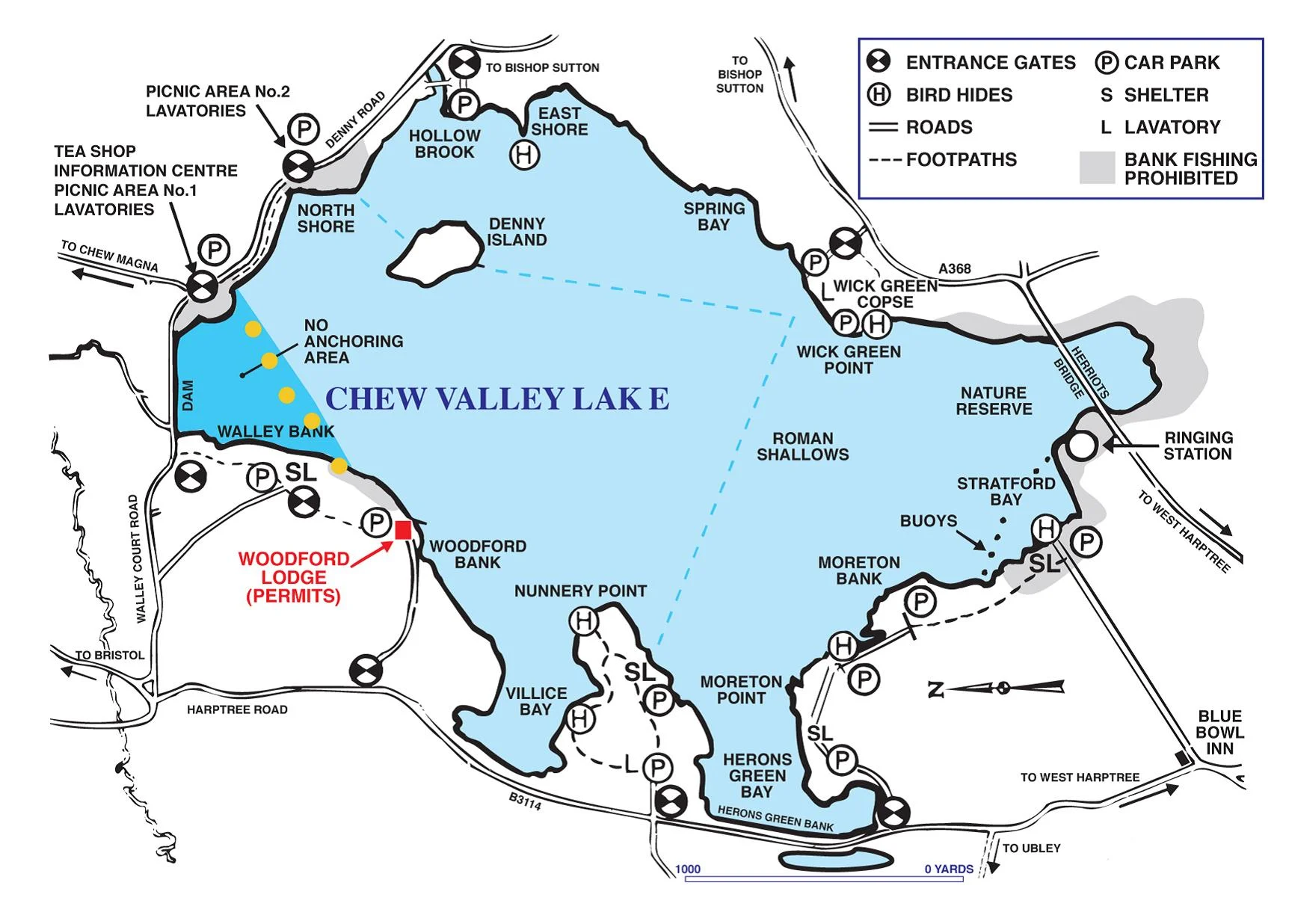
Chew Valley is well renowned for its scenic beauty and top quality fly fishing. The size and condition of the trout caught here is second to none and anglers find success using a  wide variety of fishing methods and fly patterns making it a popular competition venue. Opened in 1956 Chew is a relatively shallow reservoir with an average depth of only 14ft at top level and a maximum depth of just 37ft. The area it covers, once rich farmland, is now fertile ground for the aquatic life necessary for sustaining quality trout fishing.
wide variety of fishing methods and fly patterns making it a popular competition venue. Opened in 1956 Chew is a relatively shallow reservoir with an average depth of only 14ft at top level and a maximum depth of just 37ft. The area it covers, once rich farmland, is now fertile ground for the aquatic life necessary for sustaining quality trout fishing.
As the water starts to warm in early season Buzzer hatches can be prolific before giving way to a rich larder of non-hatching aquatic insects later in the season such as corixa, snail, hoglice and shrimp. With such a plethora natural feed it is easy to understand why fishing imitative dries, emergers and nymphs on floating lines proves so popular amongst our regulars. Chew has an excellent capacity for producing grown on fish and the lake records stand at 22lb 7oz for Brown Trout and 14lb 9oz for Rainbow Trout.
The deepest part of the lake is by the Dam and the outlet tower, where the steeply sloping shores of Walley Bank and the North Shore put depths of up to 20ft within the reach of bank anglers. Southwards the lake gets progressively shallower towards Herriots End, where the Upper River Chew enters the Lake. Chew is fortunate that it does not only rely on littoral habitat to contribute towards it’s productivity, as large offshore areas around False Island and the Roman Shallows grow dense weed beds in the warmer months providing further valuable habitat for insect life.
Find us at: Woodford Lodge, Chew Stoke, Bristol, BS40 8XH.
Tel: 01275 332339
Blagdon lake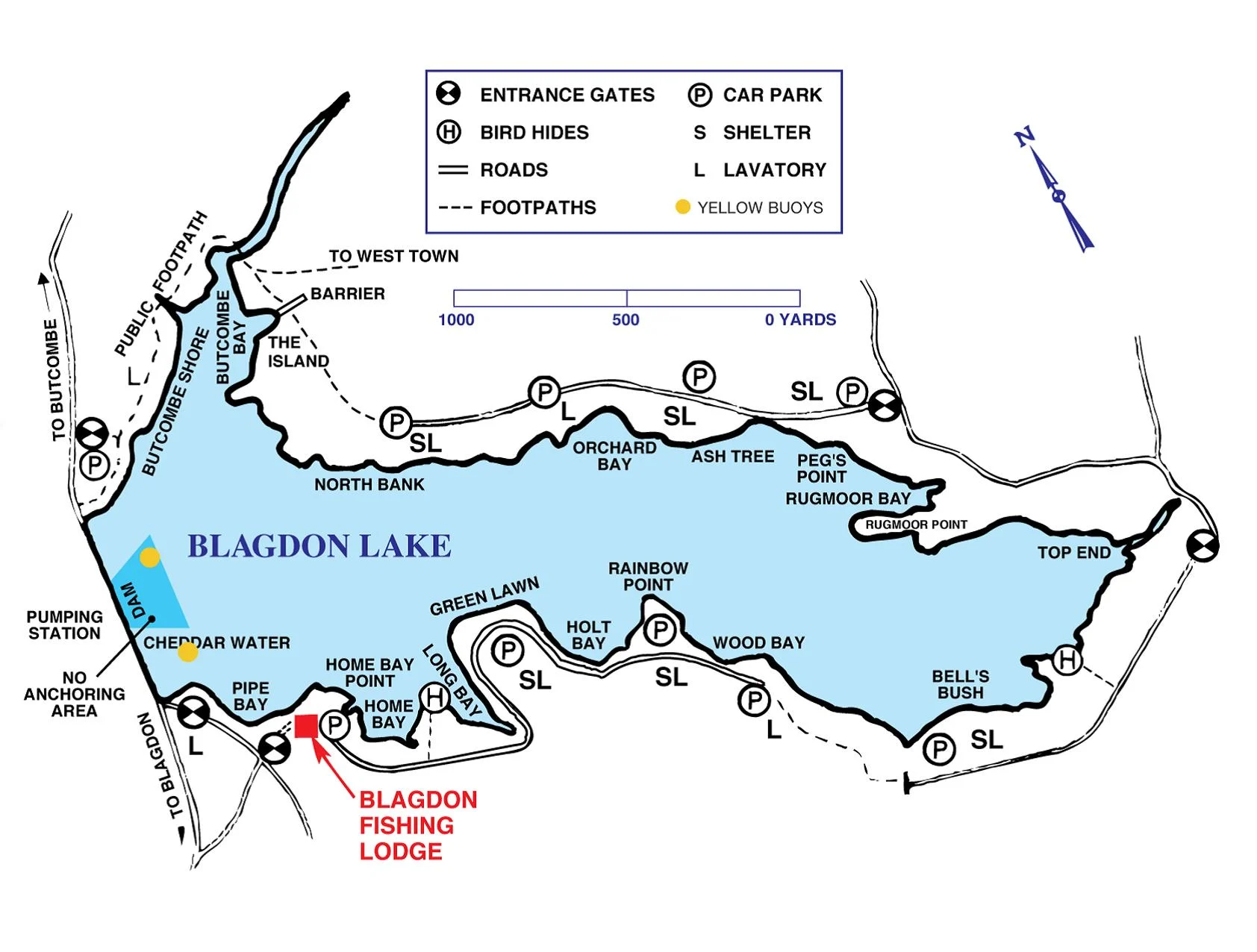

Are there many fly fishermen in the world who haven’t heard of Blagdon? The name stirs emotions for thousands of anglers as the home of still water trout fly fishing with catch records going back as far as the early 1900's. Sitting at the foot of the Mendip Hills in an Area of Outstanding Natural Beauty (AONB), Blagdon Lake covers 440 acres and is classified as a SSSI by Natural England for its’ wildflower meadows and bird populations. The long, narrow shape makes it ideal for both boat and bank fishing. There are deep basins and long banks to drift over, plenty of points and promontories for access to deeper areas as well as shallow, sheltered bays of quieter water. Most of the seven-mile perimeter has easy bank access but to explore the more remote areas a boat is the answer.
The lake is relatively shallow, with an average depth of 14 feet and only 38 feet at its deepest point near the dam (west end of the lake). Travel along its narrow length to the east and you come to the shallowest area of the lake at Top End where the River Yeo enters. In between there are many superb fishing areas with proven track records of producing the goods – Bell’s Bush, Peg’s Point, Rainbow Point, Ash Trees, Rugmoor and Green Lawn, are all areas that successful anglers will quickly become accustomed to. All methods work on the lake but many locals and experts stick to small flies and nymphs fished slowly on or near the surface. Early season and in the dying days of the year lures and sinking lines can be effective, but it is the patterns that imitate the naturals which command most attention.
On the south shore of the Lake below Blagdon village is the Fishing Lodge. This beautiful, timber framed building epitomizes the old world charm of Blagdon Lake. There is an office and small tackle shop on site selling all the essential flies and accessories. The Lodge is manned during the mornings by friendly, knowledgeable staff who are there to help you enjoy your day by giving up to the minute information on how the water is fishing. Enjoy a complimentary cup of tea or coffee before fishing or during a leisurely lunch.
We have a fleet of 20 boats for hire at Blagdon. Advance booking is essential as each boat is individually locked and when Blagdon Lodge is unstaffed anglers must report to Woodford Lodge, Chew Valley Lake, in order to sign in.
The power output of the engines has been heavily limited to reduce to noise and wake disturbance but we feel petrol engines will offer a more convenient option for anglers wishing to explore Blagdon by boat.
Anyone wishing to use their own electric engine or row is welcome to do so. We will maintain some of the fleet without petrol engines.
Lifejackets must be worn by all boat anglers, and can be loaned on request. Anchoring is not permitted in the area marked between the dam and the yellow flag buoys. Day and afternoon bank permits are available from Blagdon and Woodford Lodges. No fishing is allowed from the Dam, or in the streams at Butcombe and Top End. Care must be taken when wading from the shore as deep holes and ditches do occur around the lake.
Find us at: Blagdon Fishing Lodge, Park Lane, Blagdon, Bristol, BS40 7UL.
Tel: 01275 332339
Litton Lakes
Stocked with the same high quality trout as all our lakes, but with less fishing pressure, many customers have discovered that a leisurely day's sport in this intimate and picturesque setting is sheer delight. The lakes can cater for up to six anglers making it the ideal day for family or friend groups who want to spend time together undisturbed.
The Lower Lake
Lower Litton is a shallow, tree lined 8-acre lake. The water is deepest near the dam and there are weed beds over much of the shallower areas, these induce trout to feed at most times of the day, often providing prolific fly hatches in the evening with accompanying good rises. There is a Fishing Lodge at the waterside with veranda, tables, chairs and barbecue for use by you and your guests (please bring your own barbecue fuel). Take time out to enjoy the tranquillity and the surroundings during the day. Most of the usual nymph or mini lure techniques will work well. A good plan is to row down to the deeper water off the dam and spillway where, if the wind is light, you can drift across the lake with a team of nymphs, or use dries if there are signs of fish activity. In strong or variable winds it is usually better to anchor, but don’t stay too long in one spot.
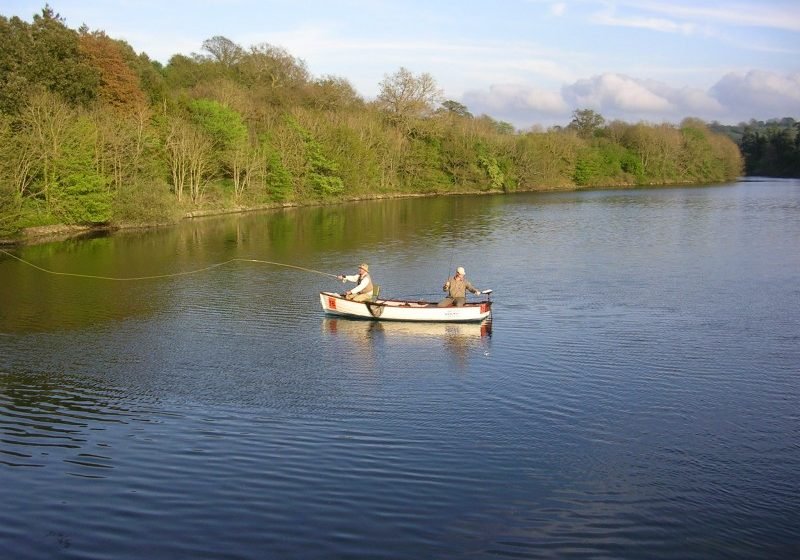 The Upper Lake
The Upper Lake
Upper Litton (11 acres) is much deeper than its sister lake and very different in character. Long and narrow with steep sides, and a stream flowing in at the top end, it can call for rather different tactics. Ideally, if there are two of you, you should take it in turns with one rowing while the other fishes. The rower holds the boat gently on the oars at a suitable distance from the shore, while the fisher casts towards the bank and beneath the overhanging branches, trying to get the fly as close to the edge as possible. Good bags are often taken this way and this method works particularly well for browns. This technique also works well along the dam wall. At the neck of the lake, where the stream enters, a mini lure or goldhead pattern retrieved fairly fast on an intermediate line can be deadly at times especially if there is a slight colour in the stream. Elsewhere a weighted nymph or goldhead fished slowly on a floating line should prove to be a useful approach but remember to let flies sink well down as the water is very deep.
Boats and facilities are self service and site keys will need to be picked up from Woodford Lodge in the morning before fishing takes place.
Find us at: Litton lakes, Litton Lane, Coley, BS40 6AN.
Tel: 01275 332339
Barrow tanks 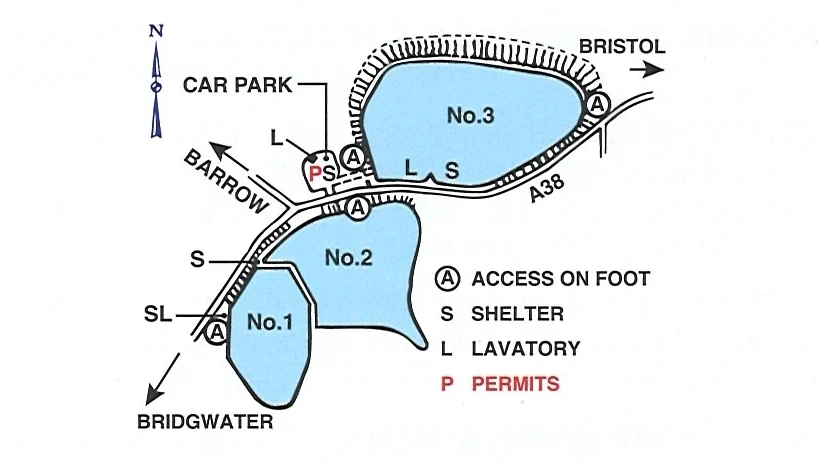
Often referred to affectionately as ‘the Tanks’, the Barrows consist of three concrete bowl type reservoirs. They are large enough to offer a real challenge, but not so big as to be intimidating, making them ideal for the angler who wants to learn the skills, flies and tactics for approaching larger waters. The Barrows occupy an intermediate position between the smaller private fisheries and the large still waters such as Chew and Blagdon. Many longstanding regulars consider the Barrows to be the best bank fishing of all the Bristol Water Fisheries, with their free rising trout and gin-clear waters.
The variety of fishing on offer is considerable, with the gentle sloping natural banks on the southeast shores of tanks 1 and 2 providing excellent dry fly-fishing from April to September, with the fish rising at any time, but best early and late in the day. The stony banks on all the tanks provide a perfect habitat for sedges, giving good sport with Stick Flies and Diawl Bachs early in the Spring, and Dries from midsummer on. The flows and outlet towers hold coarse fish fry towards the back end of the season, and fry feeders herd the shoals together before smashing into them and mopping up the injured: at this time Fry Imitations will come into their own.
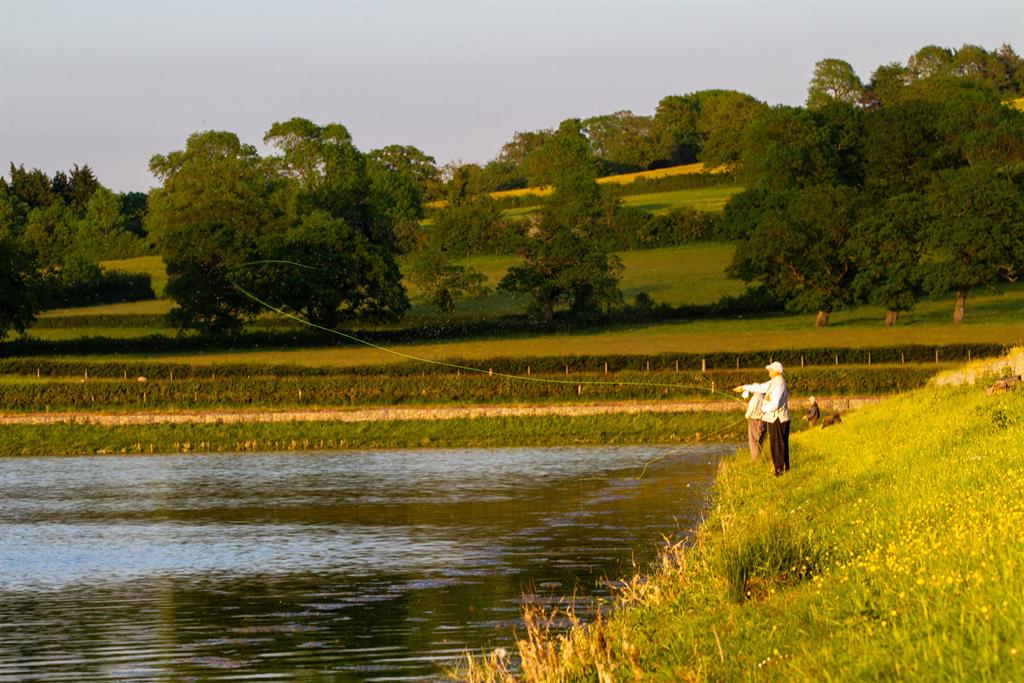
The deep drop-offs below the steeper walls offer a safe patrolling route for trout, hidden from view by the concrete lip, but a well placed. Goldhead or Weighted Nymph fished on a long leader and floating line can sometimes get amongst these patrolling trout.
The wide variety of surroundings and range of options available make the Barrows an ideal fishery, and the circular nature of the banks means that whatever wind is blowing there will always be somewhere that is fishable. Wading is not allowed at the Barrows, and care should be taken as the banks can become very slippery when the water level falls. The Barrow regulars are a friendly crowd who create a club-like atmosphere around the shores of the lakes; most of them are very willing to offer advice and information to newcomers and beginners.
Find us at: Barrow tanks Main Car Park, Barrow Gurney, Bristol, BS48 3SH.
Tel: 01275 332339
More information
Contact telephone number for all fisheries: 01275 332339